- Solanaceous Plants: A Comprehensive Guide
- Tomato
- Pepper
- Eggplant
- Potato
- Petunia
- Conclusion
- Fruiting Varieties of Solanaceous Plants
- Tomatoes
- Peppers
- Eggplants
- Potatoes
- Conclusion
- Ornamental Varieties of Solanaceous Plants
- Nightshade (Solanum lycopersicum)
- Bell Peppers (Capsicum annuum)
- Eggplant (Solanum melongena)
- Hot Peppers (Capsicum chinense, Capsicum frutescens)
- Petunia (Petunia x hybrida)
- Datura (Datura metel)
- Tobacco (Nicotiana tabacum)
- Summary:
- Cultivating Solanaceous Plants
- Choose the Right Varieties
- Soil Preparation
- Planting
- Watering and Fertilizing
- Sunlight and Support
- Pest and Disease Control
- Harvesting
- Best Practices for Growing Solanaceous Plants
- 1. Soil and Site Selection
- 2. Planting
- 3. Watering
- 4. Fertilization
- 5. Pruning and Training
- 6. Pest and Disease Management
- 7. Harvesting
- 8. Storage and Preservation
- 9. Crop Rotation
- 10. Experiment with Different Varieties
- Pest and Disease Management for Solanaceous Plants
- Introduction
- Common Pests
- Common Diseases
- Conclusion
- Harvesting and Storing Solanaceous Fruits
- Harvesting Solanaceous Fruits
- Storing Solanaceous Fruits
- Recommended Storage Times
- Creative Uses of Solanaceous Plants
- Garden Design
- Edible Landscaping
- Ornamental Displays
- Culinary Delights
- Medicinal Properties
- Repellent and Pest Control
- “Question-Answer”
- What are solanaceous plants?
- How do I care for solanaceous plants?
- What are some popular fruiting solanaceous plants?
- Can solanaceous plants be grown as ornamentals?
- Are solanaceous plants susceptible to any diseases?
- What are some tips for successful fruiting of solanaceous plants?
- “Video” Complete Guide to Purple Coneflower – Echinacea purpurea
There are few plant families as diverse and fascinating as the solanaceous plants. From the flavorful tomatoes we enjoy in our salads to the vibrant, showy flowers of the petunia, solanaceous plants offer a wide range of both ornamental and edible varieties. In this comprehensive guide, we will explore the different types of solanaceous plants and provide tips on how to successfully grow and care for them.
One of the most well-known solanaceous plants is the tomato. Whether you prefer juicy beefsteak tomatoes or sweet cherry tomatoes, there is a variety to suit every taste. Tomatoes are relatively easy to grow and are a popular choice for both beginner and experienced gardeners. We will share our top tips for growing healthy, productive tomato plants and discuss common problems and how to address them.
In addition to tomatoes, solanaceous plants also include peppers, eggplants, and potatoes. These plants are known for their delicious and versatile fruits, which can be used in a variety of culinary dishes. We will discuss the different types of peppers, from the mild bell pepper to the spicy habanero, and provide guidance on how to grow them successfully. We will also explore the many varieties of eggplant, from the traditional deep purple to the unique striped varieties. And for those interested in growing their own potatoes, we will offer advice on how to achieve a bountiful harvest.
Solanaceous Plants: A Comprehensive Guide
Solanaceous plants, also known as nightshades, belong to the family Solanaceae. This diverse group of plants includes both edible and ornamental varieties. In this comprehensive guide, we’ll explore some of the most common solanaceous plants, their characteristics, and how to cultivate them successfully.
Tomato
The tomato (Solanum lycopersicum) is perhaps the most well-known solanaceous plant. It is a versatile fruit that comes in different sizes, shapes, and colors. Tomatoes can be eaten fresh, cooked, or used for making sauces and other culinary dishes. To cultivate tomatoes, choose a sunny location with well-drained soil and provide support for the plants to grow vertically. Regular watering and fertilization are important for healthy tomato plants.
Pepper
Pepper plants (Capsicum spp.) produce a wide range of hot and sweet peppers. These plants thrive in warm climates and require full sun and well-drained soil. Peppers are typically harvested when they are still green, but they can be left to ripen and change color. Hot peppers are often dried and ground into spices, while sweet peppers are delicious when eaten raw or cooked. Regular watering, fertilization, and protection from pests are essential for successful pepper cultivation.
Eggplant
Eggplant (Solanum melongena) is a popular vegetable in many cuisines. This purple-skinned fruit can be grilled, baked, or fried and features a creamy texture and mild flavor. Eggplants require warm temperatures to thrive, so it’s best to plant them after the danger of frost has passed. They prefer full sun and well-drained soil enriched with organic matter. Regular watering and pruning will help to maintain healthy and productive eggplant plants.
Potato
The potato (Solanum tuberosum) is a staple food crop that is widely consumed around the world. Potato plants are grown from tubers, which are underground stems that store nutrients. They thrive in well-drained, loose soil and can tolerate cool temperatures. Regular watering and hilling the soil around the plants are important for optimal tuber development. Potatoes can be harvested when the plants have died back, typically in late summer or early fall.
Petunia
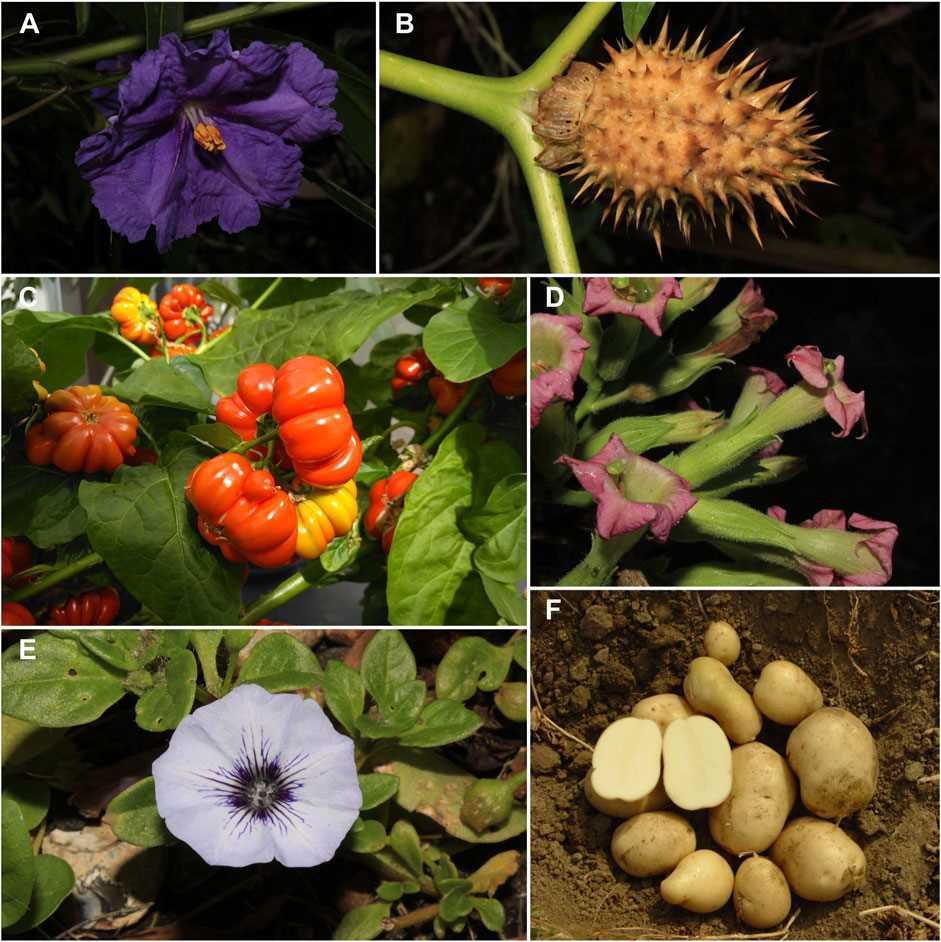
While most solanaceous plants are cultivated for their edible fruits, Petunia (Petunia spp.) is a popular ornamental plant in gardens and landscapes. These colorful flowers come in a variety of shapes and sizes and are loved for their vibrant blooms. Petunias prefer full sun and well-drained soil. Regular deadheading and fertilization are necessary to promote continuous flowering. Petunias can be grown in containers, hanging baskets, or flower beds.
Conclusion
Solanaceous plants offer a wide range of options for both edible and ornamental gardening. Whether you’re a fan of tomatoes, peppers, eggplants, or petunias, understanding the specific needs of each plant will help you cultivate them successfully. Remember to provide the right growing conditions, regular care, and protection against pests to ensure healthy, productive plants.
Fruiting Varieties of Solanaceous Plants
Solanaceous plants, also known as nightshades, are a diverse group of plants that are well-known for their edible fruits. In this article, we will explore some of the most popular fruiting varieties of solanaceous plants.
Tomatoes
Tomatoes are perhaps the most well-known fruiting variety of solanaceous plants. They come in a wide range of sizes, shapes, and colors, and can be eaten raw or cooked. Some popular tomato varieties include:
- Cherry tomatoes: These small, bite-sized tomatoes are perfect for snacking or adding to salads.
- Roma tomatoes: These oval-shaped tomatoes are known for their rich flavor and low water content, making them ideal for making sauces and pastes.
- Beefsteak tomatoes: These large, juicy tomatoes are perfect for slicing and adding to sandwiches and burgers.
Peppers
Peppers are another popular fruiting variety of solanaceous plants. They come in a range of heat levels, from mild and sweet to spicy and hot. Here are some popular pepper varieties:
- Bell peppers: These large, sweet peppers are commonly used in cooking and can be eaten raw or cooked.
- Jalapeno peppers: These medium-spicy peppers are often used to add a kick to salsas, sauces, and other dishes.
- Habanero peppers: These extremely hot peppers are only for the brave, and are used sparingly to add intense heat to dishes.
Eggplants
Eggplants are a fruiting variety of solanaceous plants that are commonly used in cooking. They have a unique, meaty texture and can be prepared in a variety of ways. Some popular eggplant varieties include:
- Italian eggplants: These are large, purple eggplants that are often used in Italian dishes like eggplant Parmesan.
- Japanese eggplants: These small, slender eggplants have a mild flavor and are often used in Asian cooking.
- White eggplants: These eggplants have a creamy white color and a mild flavor, making them a versatile option for cooking.
Potatoes
Potatoes are a staple food in many cuisines around the world and are a popular fruiting variety of solanaceous plants. They come in a variety of colors and textures, and can be cooked in numerous ways. Some popular potato varieties include:
- Russet potatoes: These are large, starchy potatoes that are perfect for baking, mashing, or frying.
- Red potatoes: These small, waxy potatoes have a firm texture and are often used in salads or roasted.
- Fingerling potatoes: These small, elongated potatoes have a buttery flavor and are great for roasting or sautéing.
Conclusion
These are just a few examples of the many fruiting varieties of solanaceous plants. Whether you’re growing them for their delicious fruits or their ornamental value, solanaceous plants offer a wide range of options to suit any taste or preference. Experiment with different varieties and enjoy the bountiful harvest they can provide!
Ornamental Varieties of Solanaceous Plants
Nightshade (Solanum lycopersicum)
Commonly known as tomatoes, nightshade plants are popular for their culinary uses as well as their ornamental value. They come in various sizes and colors, including red, yellow, and orange. Nightshade plants are known for their vibrant foliage and juicy fruits. They can be grown in containers or in the ground.
Bell Peppers (Capsicum annuum)
Bell peppers are another popular ornamental variety of solanaceous plants. They are known for their bell-shaped fruits that come in a range of colors, including green, red, yellow, and purple. Bell pepper plants have attractive shiny foliage and can be easily grown in containers or in the ground.
Eggplant (Solanum melongena)
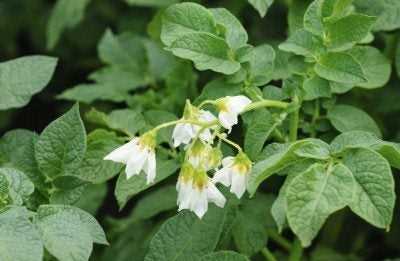
Eggplants are beautiful ornamental plants that produce edible fruits. They come in various shapes and sizes, including round, oval, and elongated. Eggplant plants have attractive foliage with a glossy sheen and can be grown in containers or in the ground.
Hot Peppers (Capsicum chinense, Capsicum frutescens)
Hot peppers are known for their spicy fruits and ornamental value. They come in various shapes, sizes, and colors, including red, yellow, orange, and purple. Hot pepper plants have attractive foliage and are popular in ornamental gardens and as potted plants.
Petunia (Petunia x hybrida)
Petunias are often used as ornamental bedding plants. They come in a wide range of colors, including white, pink, red, purple, and blue. Petunia plants have showy trumpet-shaped flowers and can be grown in containers or in the ground.
Datura (Datura metel)
Datura plants, also known as angel’s trumpet, are highly ornamental and have trumpet-shaped flowers that bloom in various colors, including white, yellow, and purple. Datura plants have large, heart-shaped leaves and can be grown in containers or in the ground.
Tobacco (Nicotiana tabacum)
Tobacco plants are popular for their ornamental flowers and their use in the tobacco industry. They come in various colors, including white, pink, and purple. Tobacco plants have long, tubular flowers and can be grown in containers or in the ground.
Summary:
Ornamental varieties of solanaceous plants offer a wide range of options for gardeners and plant enthusiasts. From nightshade plants like tomatoes and bell peppers to flowering plants like petunias and daturas, these plants add beauty and color to any garden or landscape. Whether grown in containers or in the ground, solanaceous plants can thrive and provide an eye-catching display for anyone to enjoy.
Cultivating Solanaceous Plants
With their diverse range of fruiting and ornamental varieties, solanaceous plants can be a rewarding addition to any garden. Whether you are a beginner or an experienced gardener, here are some tips on how to cultivate solanaceous plants successfully.
Choose the Right Varieties
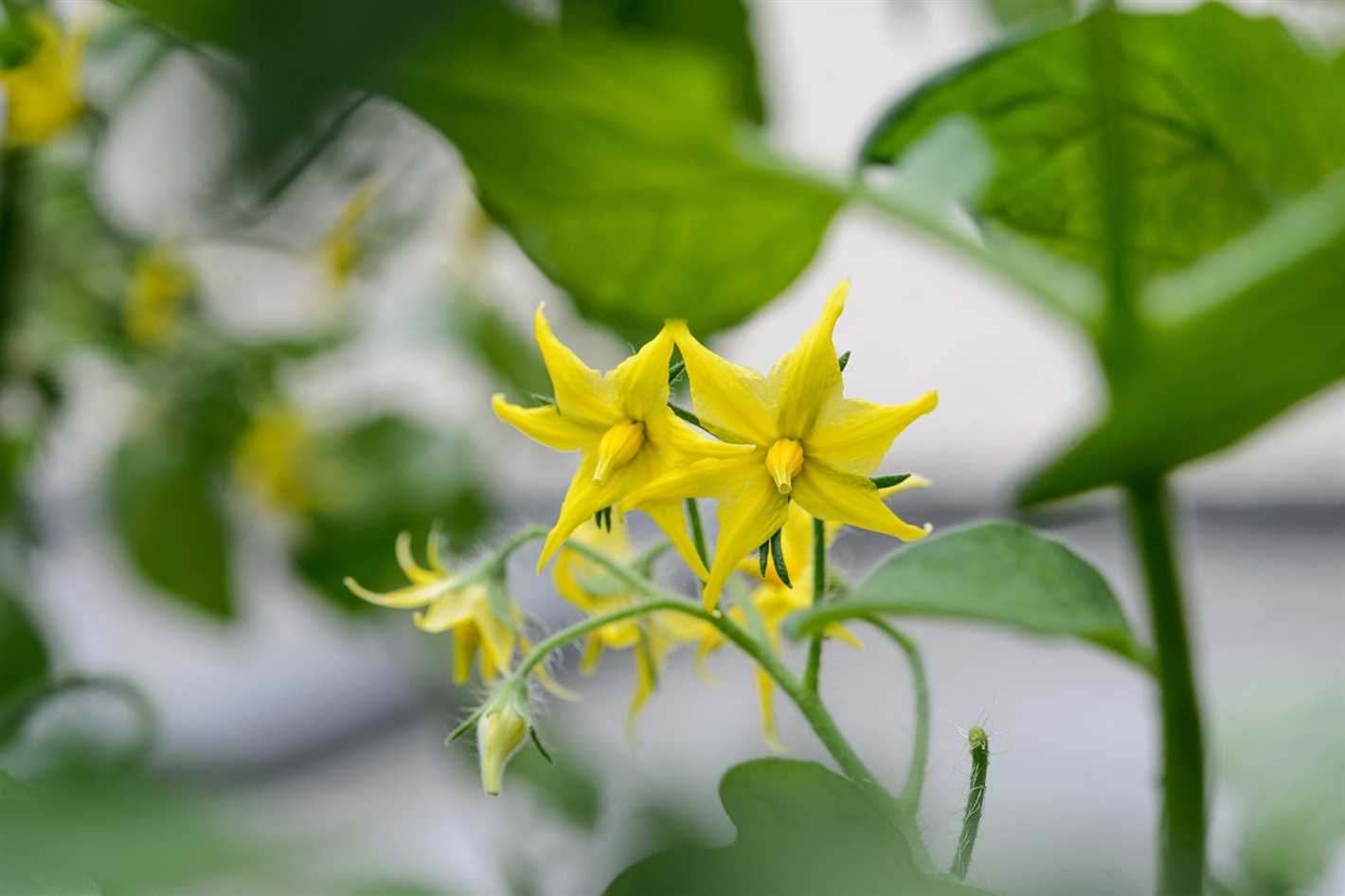
There are numerous solanaceous plants to choose from, each with its own unique growth requirements and characteristics. When selecting varieties, consider factors such as the climate in your area, available sunlight, and space in your garden. Some popular solanaceous plants include tomatoes, peppers, eggplants, and potatoes.
Soil Preparation
Before planting solanaceous plants, it is crucial to prepare the soil properly. Solanaceous plants thrive in well-draining, fertile soil. Amend your soil with compost or organic matter to improve its structure and nutrient content. Additionally, test the pH level of your soil and adjust it accordingly, as solanaceous plants prefer slightly acidic to neutral soil.
Planting
When it comes to planting solanaceous plants, timing is crucial. Start seeds indoors several weeks before the last frost date, or purchase young plants from a reputable nursery. Transplant the seedlings into the garden after the danger of frost has passed and the soil has warmed up. Space the plants according to the recommendations for each specific variety.
Watering and Fertilizing
Solanaceous plants require regular watering to maintain healthy growth and fruit production. Provide them with sufficient water, making sure to keep the soil evenly moist. However, avoid overwatering, as it can lead to root rot and fungal diseases.
In terms of fertilizing, solanaceous plants are heavy feeders. Apply a balanced fertilizer or a specialized organic fertilizer formulated for tomatoes, peppers, or other solanaceous plants. Follow the instructions on the fertilizer packaging to ensure the correct application rate.
Sunlight and Support
Solanaceous plants thrive in full sun, requiring a minimum of 6-8 hours of direct sunlight per day. Choose a location in your garden that receives ample sunlight and provides protection from strong winds. Additionally, many solanaceous plants benefit from the use of support structures, such as stakes, trellises, or cages, to keep their stems and fruit off the ground.
Pest and Disease Control
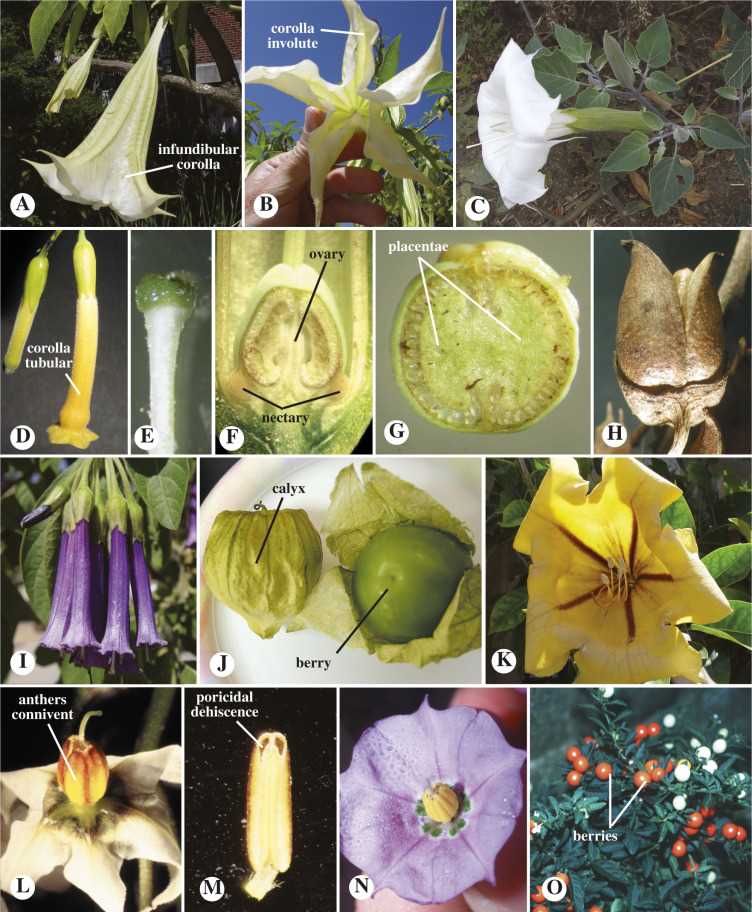
Solanaceous plants can be susceptible to various pests and diseases, including aphids, tomato hornworms, and early blight. Monitor your plants regularly for signs of infestation or disease, and take appropriate action if necessary. Consider using organic pest control methods or biological controls, such as ladybugs or beneficial nematodes, to manage pests without resorting to chemical pesticides.
Harvesting
The timing of harvesting solanaceous plants depends on the specific variety and desired ripeness. Generally, tomatoes, peppers, and eggplants should be harvested when they have reached their full color and are firm to the touch. Potatoes, on the other hand, are typically harvested when the foliage has died back and the tubers are mature.
By following these cultivation tips, you can enjoy a bountiful harvest of solanaceous plants and enjoy their beauty in your garden.
Best Practices for Growing Solanaceous Plants
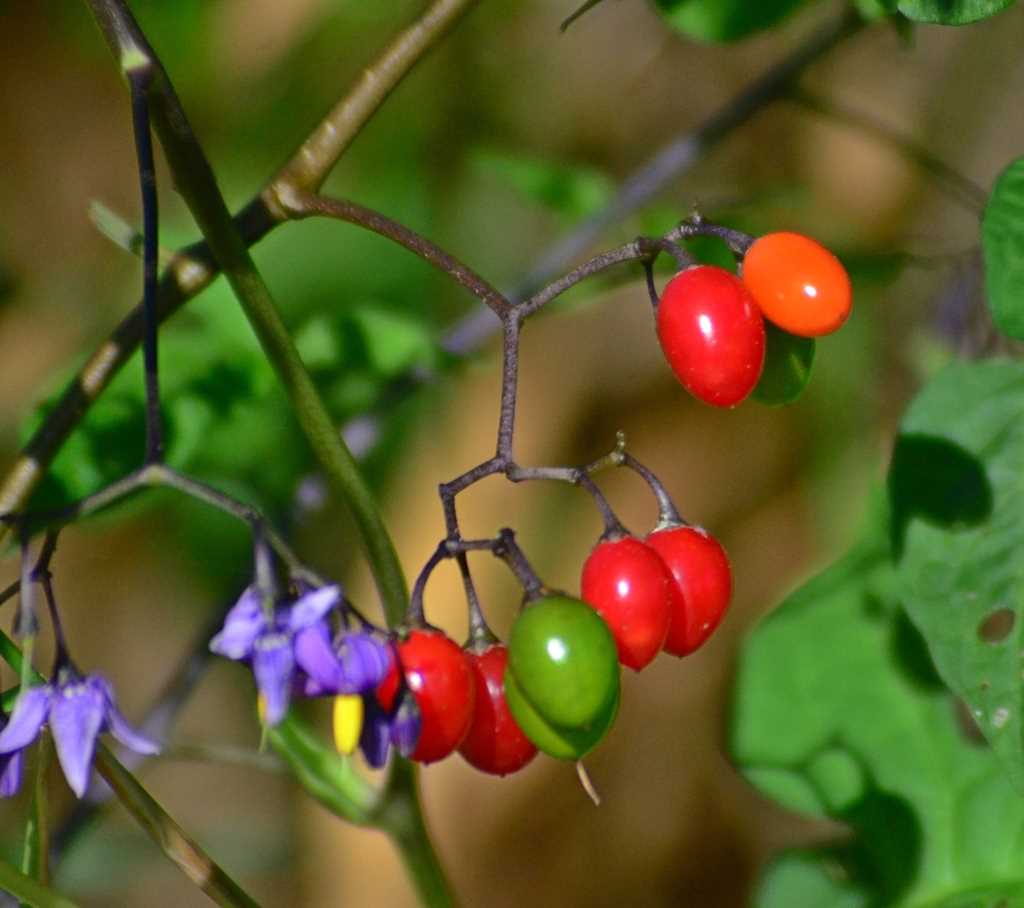
1. Soil and Site Selection
Choose a well-draining soil with a pH level of around 6.0 to 7.0. Solanaceous plants prefer full sun, so select a site with at least 6 hours of direct sunlight per day.
2. Planting
Start seeds indoors 6-8 weeks before the last frost date for your area. Transplant seedlings outdoors after all danger of frost has passed. Space plants according to the specific requirements of each variety.
3. Watering
Water solanaceous plants deeply and regularly, providing about 1 inch of water per week. Avoid overhead watering to prevent disease. Mulching around plants can help retain moisture and control weeds.
4. Fertilization
Before planting, incorporate well-rotted compost or aged manure into the soil. Side dress the plants with a balanced fertilizer once a month during the growing season. Follow package instructions for application rates.
5. Pruning and Training
Pinch off the growing tips of young plants to encourage bushier growth. To support heavy fruiting, stake or cage the plants. Remove suckers and lower leaves that touch the ground to improve air circulation and reduce the risk of disease.
6. Pest and Disease Management
Monitor your plants regularly for signs of pests or diseases. Common pests include aphids, tomato hornworms, and whiteflies. Use organic or chemical pest controls as necessary. Rotate your crops each year to minimize disease problems.
7. Harvesting
Harvest fruits when they reach the desired size and color. Tomatoes should be fully ripe on the vine, while peppers can be harvested when they reach the desired color, even if they are still green. Use a sharp knife or shears to avoid damaging the plant.
8. Storage and Preservation
Store harvested fruits in a cool, dry place. Tomatoes can be kept at room temperature, while peppers can be stored in the refrigerator. Preserve excess fruits by canning, freezing, or drying them for later use in cooking.
9. Crop Rotation
Avoid planting solanaceous plants in the same spot year after year to prevent nutrient depletion and disease build-up. Rotate your crops with plants from other families to maintain soil health and reduce the risk of pests and diseases.
10. Experiment with Different Varieties
Try growing different varieties of solanaceous plants to discover your favorites. There are countless types of tomatoes, peppers, and eggplants, each with its own unique flavor, shape, and color. Experimenting will add excitement to your gardening experience.
| Plant Name | Botanical Name | Characteristics |
|---|---|---|
| Tomato | Solanum lycopersicum | Various sizes, colors, and flavors |
| Pepper | Capsicum spp. | Hot or sweet, various shapes and colors |
| Eggplant | Solanum melongena | Various sizes, shapes, and colors |
| Potato | Solanum tuberosum | Edible tubers, various sizes and colors |
Pest and Disease Management for Solanaceous Plants
Introduction
Solanaceous plants belong to the family Solanaceae and include popular fruit and ornamental varieties such as tomatoes, peppers, eggplants, and petunias. Like any other plants, solanaceous plants are susceptible to various pests and diseases. Proper pest and disease management are crucial to ensure the health and productivity of these plants. In this section, we will discuss some common pests and diseases that affect solanaceous plants and provide some management strategies.
Common Pests
1. Aphids: These small, soft-bodied insects feed on plant sap and can be found on the leaves and stems of solanaceous plants. They reproduce rapidly and can cause damage by sucking out plant nutrients and secreting sticky honeydew, which can lead to the growth of sooty mold.
Management: Regularly inspect plants for aphid infestations and use insecticidal soaps or neem oil to control them. Introduce beneficial insects, such as ladybugs and lacewings, which feed on aphids.
2. Tomato Hornworms: These large green caterpillars can defoliate solanaceous plants, especially tomato plants. They are usually camouflaged and can be difficult to spot.
Management: Handpick and destroy the hornworms when they are found. Use biological control methods such as releasing parasitic wasps that attack the hornworms.
3. Whiteflies: These tiny, white flies feed on the undersides of leaves and can cause significant damage to solanaceous plants. They can transmit plant diseases and suck sap, which weakens the plants.
Management: Use yellow sticky traps to monitor and capture adult whiteflies. Introduce natural enemies such as predatory insects or use insecticidal soaps to control whiteflies.
Common Diseases
1. Early Blight: This fungal disease is characterized by brown spots on the leaves, which eventually turn black and cause the leaves to wither and die. It can affect all solanaceous plants.
Management: Remove and destroy infected plant parts. Rotate crops annually to prevent the buildup of fungal spores in the soil. Apply fungicides as a preventive measure.
2. Late Blight: This devastating fungal disease mainly affects tomatoes and can quickly spread under cool and wet conditions. It causes dark, water-soaked spots on the leaves, stems, and fruits.
Management: Remove and destroy infected plants immediately. Avoid overhead watering. Apply fungicides regularly when weather conditions favor the disease.
3. Verticillium Wilt: This soilborne fungal disease affects a wide range of solanaceous plants, causing wilting, yellowing, and eventually death of the plant.
Management: Select resistant varieties and practice crop rotation. Avoid over-irrigation and keep plants well-spaced to promote air circulation. There are no effective chemical treatments for this disease.
Conclusion
Pest and disease management is essential for maintaining the health and productivity of solanaceous plants. Regular monitoring, proper cultural practices, and timely intervention are the keys to successful management. By following these strategies, gardeners can enjoy bountiful harvests and beautiful ornamental displays from their solanaceous plants.
Harvesting and Storing Solanaceous Fruits
Harvesting and storing solanaceous fruits is an important part of the growing process. Properly harvesting and storing these fruits can ensure their freshness and extend their shelf life. Here are some guidelines to follow:
Harvesting Solanaceous Fruits
- Make sure the fruits are fully ripe before harvesting. They should have reached their mature size and have a vibrant color.
- For tomatoes, gently twist or cut the stem just above the fruit when harvesting. Be careful not to damage the fruit.
- For peppers, use a pair of garden shears or a sharp knife to cut the stem just above the fruit.
- For eggplants, use a pair of garden shears to cut the stem about 1/2 inch above the fruit.
Storing Solanaceous Fruits
- Before storing, wash the fruits gently to remove any dirt or debris.
- Dry the fruits thoroughly to prevent mold growth.
- For short-term storage, place the fruits in a single layer in a cool, dry place out of direct sunlight.
- For long-term storage, wrap each fruit individually in newspaper or store them in a breathable plastic bag.
- Store the fruits in a cool, dark place such as a basement or root cellar with a temperature of around 50°F (10°C) and a humidity level of 85-90%.
- Check the stored fruits regularly and remove any that show signs of spoilage.
Recommended Storage Times
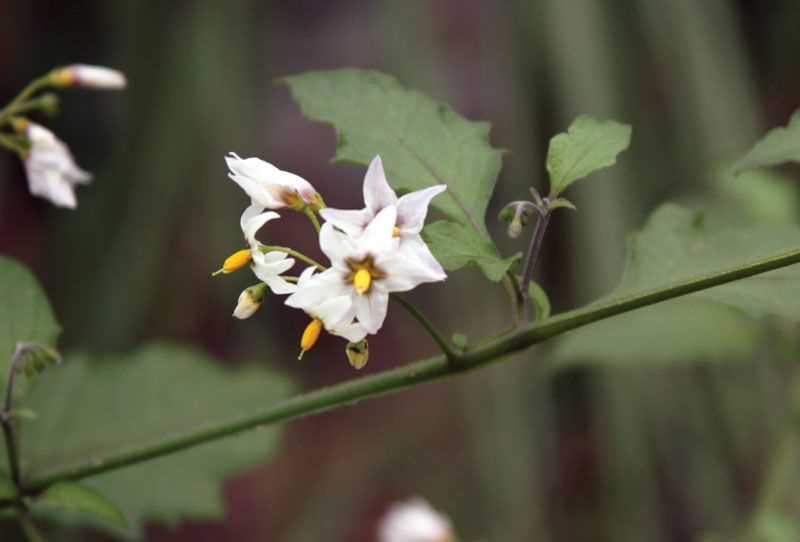
| Solanaceous Fruit | Short-Term Storage | Long-Term Storage |
|---|---|---|
| Tomatoes | 5-7 days | 2-3 weeks |
| Peppers | 1-2 weeks | 2-3 months |
| Eggplants | 1-2 weeks | 2-3 months |
By following these guidelines, you can maximize the freshness and quality of solanaceous fruits for your culinary needs. Enjoy the flavors of your homegrown produce throughout the year!
Creative Uses of Solanaceous Plants
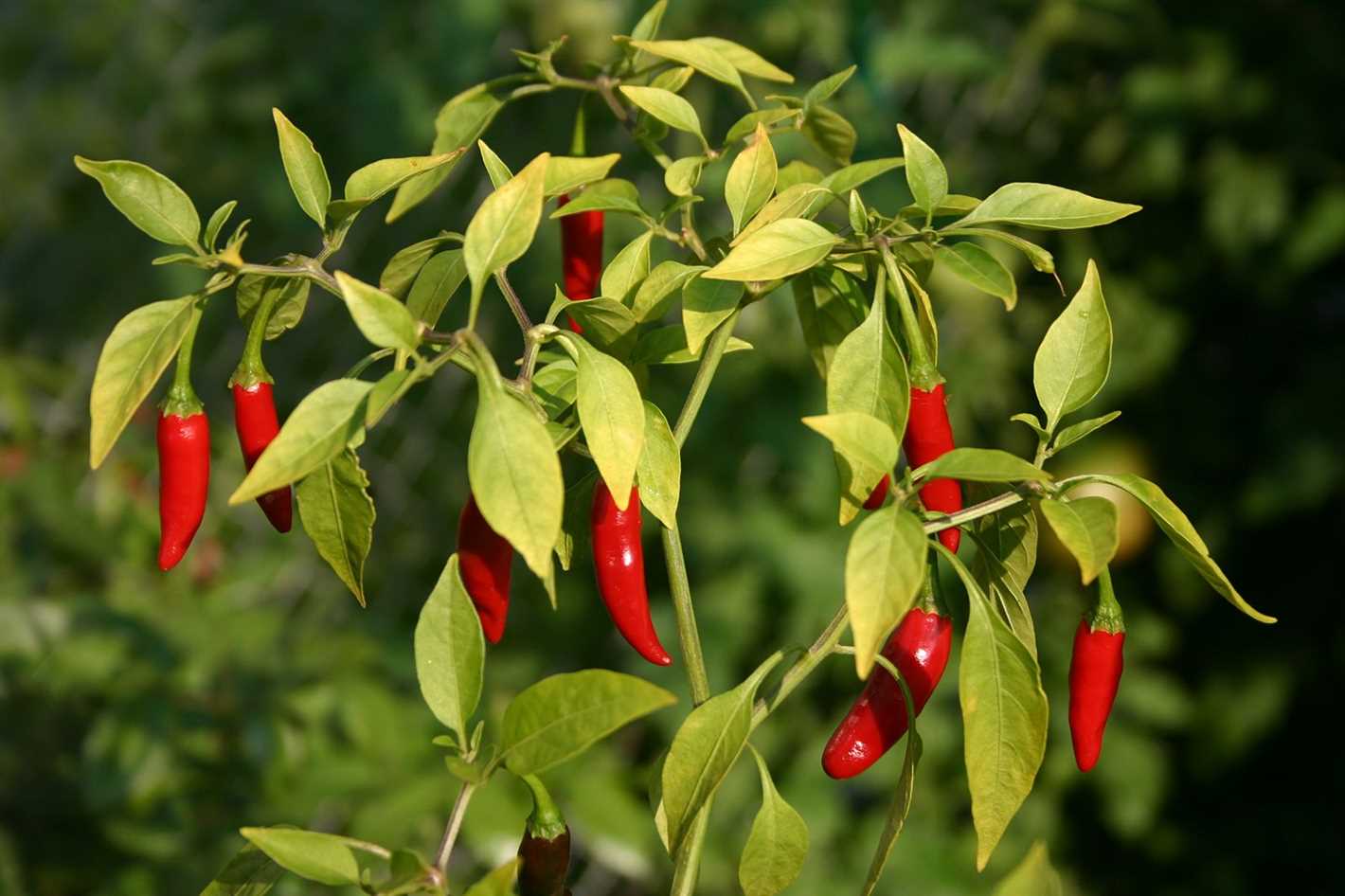
Solanaceous plants, also known as nightshades, encompass a wide variety of fruiting and ornamental plants that can be used in creative ways. From adding vibrant colors to your garden to creating delicious dishes, solanaceous plants provide countless opportunities for creativity and enjoyment. Here are some creative uses of solanaceous plants:
Garden Design
Solanaceous plants, with their beautiful and varied foliage, can be used to create stunning garden designs. Their vibrant colors and distinct growth habits make them a great choice for both container gardens and traditional garden beds. Consider incorporating solanaceous plants like tomatoes, peppers, and eggplants into your garden design to add visual interest and create a focal point.
Edible Landscaping
Many solanaceous plants produce delicious fruits and vegetables that can be used in the kitchen. Incorporating these plants into your landscape not only adds beauty but also provides a source of fresh and healthy produce. Imagine harvesting ripe tomatoes and peppers from your own backyard or enjoying a homemade salsa made from homegrown ingredients.
Ornamental Displays
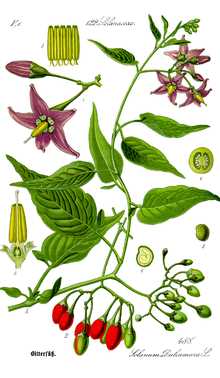
Solanaceous plants can also be used in ornamental displays to create eye-catching arrangements. The bright and bold colors of plants like peppers and ornamental eggplants make them perfect for adding visual appeal to flower arrangements, bouquets, and table centerpieces. Their unique shapes and textures can bring a touch of whimsy and intrigue to any display.
Culinary Delights
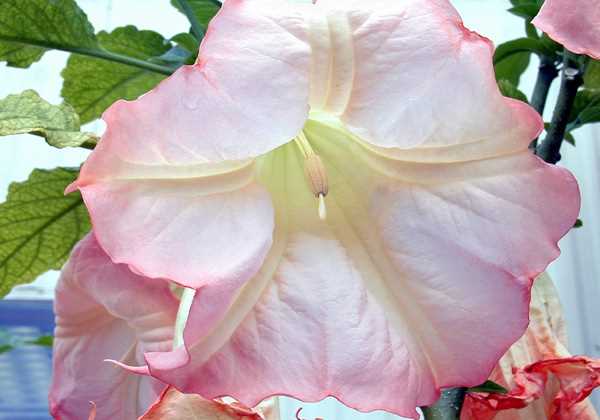
One of the most well-known uses of solanaceous plants is in the kitchen. Tomatoes, peppers, and eggplants are staple ingredients in many different cuisines around the world. From pasta sauces and salsas to soups and stir-fries, solanaceous plants add flavor and depth to a wide range of dishes. Get creative in the kitchen and explore different ways to incorporate these tasty plants into your meals.
Medicinal Properties
Some solanaceous plants, such as belladonna and mandrake, have historically been used for their medicinal properties. However, it is important to note that these plants can be toxic and should not be consumed without proper guidance and expertise. If you are interested in exploring the medicinal properties of solanaceous plants, consult with a qualified herbalist or healthcare professional for safe and accurate information.
Repellent and Pest Control
Solanaceous plants contain natural compounds that can act as repellents or pest control agents. For example, the alkaloid nicotine found in tobacco plants can act as a natural insecticide. You can use solanaceous plants strategically in your garden to deter pests and protect other plants from damage. However, be cautious when using these plants around children and pets, as some of them can be toxic if ingested.
With their wide range of uses, solanaceous plants offer endless possibilities for creativity and enjoyment. Whether you are a gardener, a cook, or simply someone who appreciates the beauty of plants, solanaceous plants are sure to bring joy to your life.
“Question-Answer”
What are solanaceous plants?
Solanaceous plants are a family of plants that belong to the Solanaceae family. They include a variety of fruiting and ornamental plants, such as tomatoes, peppers, eggplants, and petunias.
How do I care for solanaceous plants?
Proper care for solanaceous plants includes providing them with full sun, well-drained soil, regular watering, and fertilization. It is also important to monitor for pests and diseases and take appropriate measures to control them.
What are some popular fruiting solanaceous plants?
Some popular fruiting solanaceous plants include tomatoes, peppers, eggplants, and tomatillos. These plants are known for their delicious and versatile fruits, which are commonly used in various cuisines.
Can solanaceous plants be grown as ornamentals?
Yes, many solanaceous plants have attractive flowers and foliage, which make them suitable for ornamental gardening. Some popular ornamental solanaceous plants include petunias, nicotiana, and brugmansia.
Are solanaceous plants susceptible to any diseases?
Yes, solanaceous plants can be susceptible to various diseases, including fungal infections like blight and powdery mildew, as well as viral diseases like tomato mosaic virus. It is important to practice good sanitation and use disease-resistant varieties to minimize the risk of infections.
What are some tips for successful fruiting of solanaceous plants?
To ensure successful fruiting of solanaceous plants, it is important to provide them with adequate sunlight, water consistently, provide support for taller plants, and fertilize regularly. Pruning can also help improve air circulation and reduce the risk of diseases.







